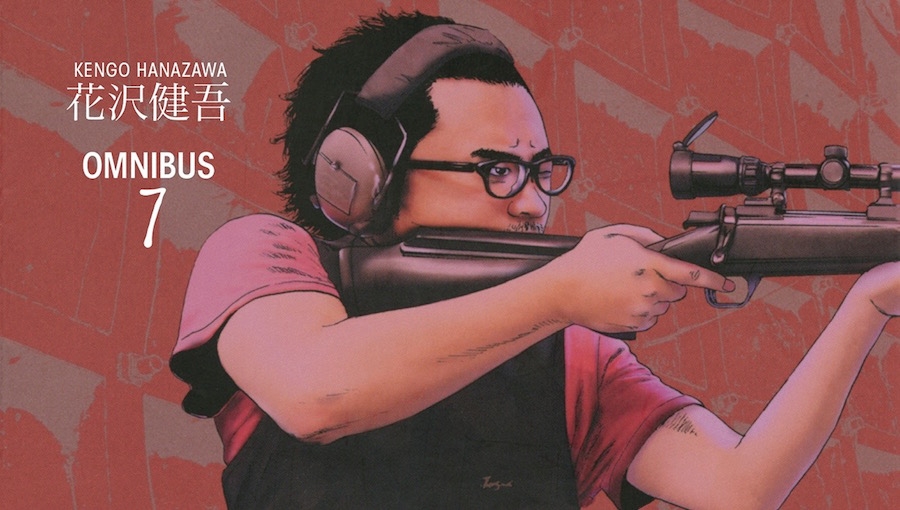Whenever I crack open a volume of Kengo Hanazawa’s brilliant I Am a Hero, I have no idea where we’re going to start and where we’re going to end. There’s no way of knowing. For every previous escalation of intensity, it’s difficult to imagine how the story can continue to escalate while staying as grounded, extreme, and emotionally astute as it is. It’s beguiling to me, but that’s part of the joy. What started out as a zombie epic has spun wildly away from the zombie genre itself, and much like Cowboy Bebop, Evangelion, Attack on Titan, or Durarara!! has created a new genre unto itself.
The seventh omnibus introduces a new character. Through Hanazawa’s resplendent and detailed art, he pulls us into this story immediately with the loneliness of the character’s mental state and the confusion that surrounds him in the way the environment is presented. It’s a beautiful beginning. Soon, we’re back with our three central characters: Hideo, the hero with the gun who sometimes sees things that aren’t there; Hiromi, an underage student who was bitten but somehow has managed to not convert; and Oda, an angsty nurse that, for better or worse, despite living a miserable life, desperately clings to stay alive with the rest of them. They cling to the laws and rules they are used to, even as things spiral further and further away from what they understand to be reality. This trifecta would be enough to carry the story through several volumes, but as they do what they can to simply survive, the stories that have been briefly set aside linger in the back of our minds. It’s hard to forget them for two reasons:
One, because you want to know what’s happening. Every character has been fleshed out to the point that it’s hard to spend time away from them.
Two, because crucial information was introduced in the parallel story, and you don’t know how it’s going to come into play in this story.
Zombies are in their truest, stripped-down form as surreal representations of life. They mock what we think we know about life and death. They show that, in the end, we have no control over any of this. Hanazawa uses this to his advantage with every advancement in the understanding of what’s happening, allowing this surrealism to become increasingly horrific, strange, hilarious, and beautiful – often at the same time. The world that Hanazawa has created works so well because the foundation is so firmly in place. None of the chaos feels chaotic because the logic of it has gotten us where we are. I do know that the cliffhanger at the end of this omnibus is completely mental; my eyes widened, and my jaw dropped. How could I have expected that? And yet, it fits perfectly into the puzzle that’s being created. I have no idea where these mysteries are going to lead us, but I’ll be here when the next collection is released. You have no excuse not to be.
Creative Team: Kengo Hanazawa (story, art), Kumar Sivasubramanian (Translation), Philip R. Simon (English adaptation), Steve Dutro (letters)
Publisher: Dark Horse
Click here to purchase.

